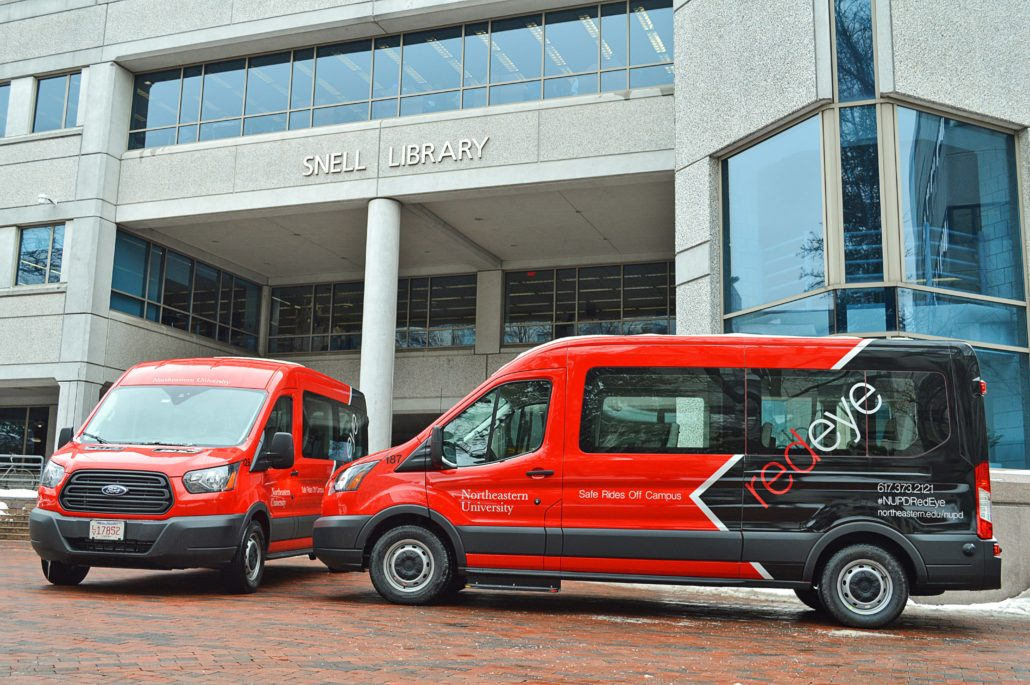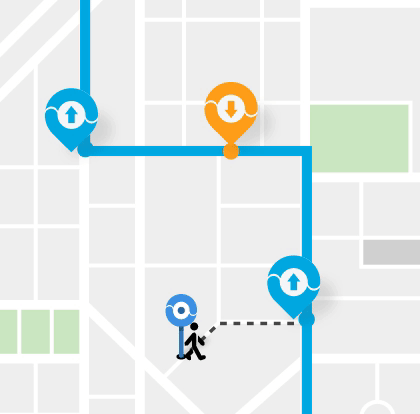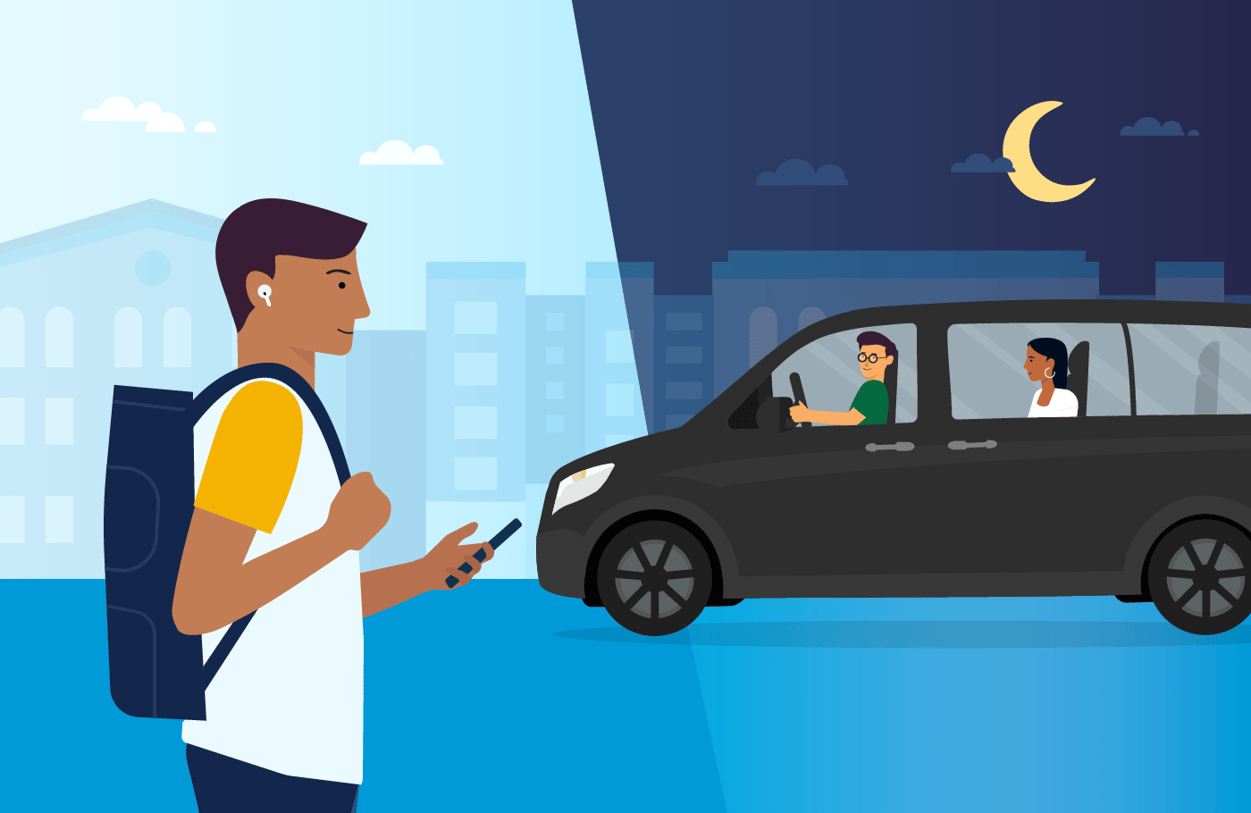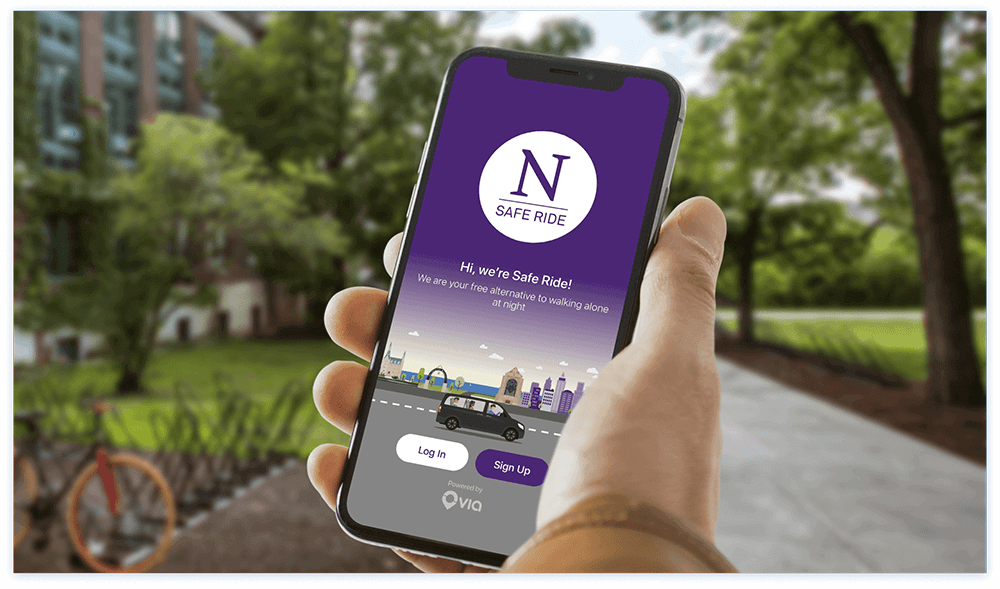Despite the ongoing impact of COVID-19, the nation saw an 11% increase in student applications for the 2021-2022 school year. With all those students descending on campuses right now, universities are broadly reevaluating their approach to safety beyond virus prevention practices — and transportation is top of mind.
Late-night transit may be key to campus safety.
Institutions have long provided various transit options for students to help them get around campus. During busy class hours, fixed route bus services tend to be the preferred option, saving time and resources for students and universities alike by providing fast, efficient mobility.
But not all activities and classes take place between 9-to-5, when travel demand is dense enough to fill a large bus. Many students need transportation after a long night at the library, a shift working at the student center, or an a capella practice — and when a walk alone home in the dark is often the only available option. Fixed route buses are inefficient for both the school and students in this scenario. To maintain the frequency of service required to meet students’ late-night needs — 15-30 minutes minimum — universities must maintain a large fleet while carrying just a few riders per bus, driving up cost per trip.
While many universities implement some form of late-night Dial-A-Ride service, these too can be inefficient. When scheduled manually or with legacy technology, buses take circuitous routes to sequential pickups rather than aggregating passengers traveling in the same direction. The practice frustrates students by all but ensuring long wait times and potentially making them wait in the dark instead of travel, exactly what campus transit is intended to prevent.

Making traveling on campus safe and smart.
In hope of enhancing students’ transit experience, a number of schools are turning to a tech-powered mobility model to make their transport services highly adaptable to students' needs and schedules. By partnering with software-as-a-service (SaaS) companies, they are building their own on-demand microtransit service that allows students to book rides whenever they need, right at their fingertips from a mobile app.
This new type of shuttle provides new flexibility for schools to respond to evolving safety standards and riders’ demands in real-time, and even manage contact tracing, which is especially critical in disruptive periods like COVID-19. University transportation administrators can adjust vehicle capacity to enforce social distancing and, when ridership changes, vehicle capacity can again adapt to maximize efficiency. Meanwhile, underutilized fixed routes can be quickly converted to demand response and back again, when ridership resumes.
Customizing your very own microtransit.
There’s no one right way to manage microtransit on campus, because every university has a different number of students with unique needs and schedules. Tailoring on-demand campus transportation service to each campus’ specific needs will help universities serve their students better while enhancing administration efficiency in the long run.
Here are a few key factors to consider for universities in an effort to explore this new mobility option.

- Dynamic route planning and dispatching
Responding to riders' real-time demand without delay is a core feature of effective late-night service. Routing software should be able to optimize trips to place students headed in the same direction in the same vehicle, ensuring they reach their destination safely and quickly. Using automated dispatching tools, operators can match supply and demand easily and achieve further operational efficiency with minimal manual engagement.
- Increasing visibility into trips
Conventional Dial-A-Ride or bus services usually offer little or no visibility into schedules. Lack of real-time updates like vehicle locations and ETAs can impact student safety at night: Rather than waiting inside and tracking a vehicle’s arrival on a smartphone, students must wait outside at dark bus stops for an unknown period of time.
- Flexible service hours
An institution's transportation committee can decide the operation hours based on the specific needs of the school, like whether the service operates throughout the day, only after dark, or during the holidays for students who remain on campus. University officials can implement service changes quickly by simply updating a few settings, rather than design and implement new fixed routes.
- Tailored service zones
Unlike traditional ride-hailing services which allow students to travel anywhere in the city, university on-demand shuttles have the bandwidth to specify service zones and always schedule rides within the campus limit, even to and from selected campus locations like the library. This zone-based model creates a network of small-scale transportation that balances accessibility, safety, and efficiency.
Delivering convenient safe rides at a sustainable cost.
To achieve universities’ goal of delivering safe transportation for students, safe ride programs must be both convenient, to facilitate student adoption, and cost-effective, to ensure long-term sustainability. That’s why many of the United States’ leading universities are building their own microtransit systems with advanced technology.
In September 2019, Northwestern University partnered with Via to relaunch its nighttime Safe Ride program. Backed by the company’s software technologies, the university created its own app called NU Safe Ride, where students can book free rides in-app. With four dedicated vehicle fleets, students can easily access safe and flexible late-night mobility exclusively around campus. Improved service has greatly enhanced students' traveling experience, which translated into increasing ridership by 65%. Since launch, the service has seen a 43% reduction in cost per trip and has “exceeded expectations” according to University officials.
Looking ahead to a post-COVID-19 world.
An efficient microtransit service on campus isn’t just a way for universities to reopen and keep students safe on campus during the pandemic. While the system can be created with social distancing and regular cleaning in mind, all of those procedures are flexible and can respond to changes in university policies and student needs.
By partnering up with an experienced SaaS provider, universities can create an expertly built microtransit system that fits the university’s budget, meets students’ transportation needs, and ensures their safety during and after COVID-19.





